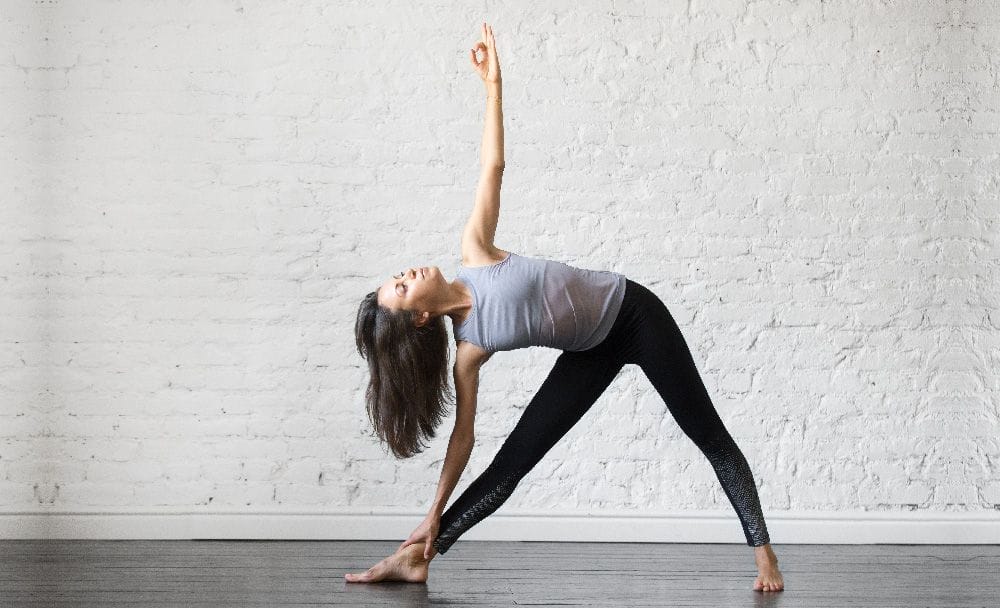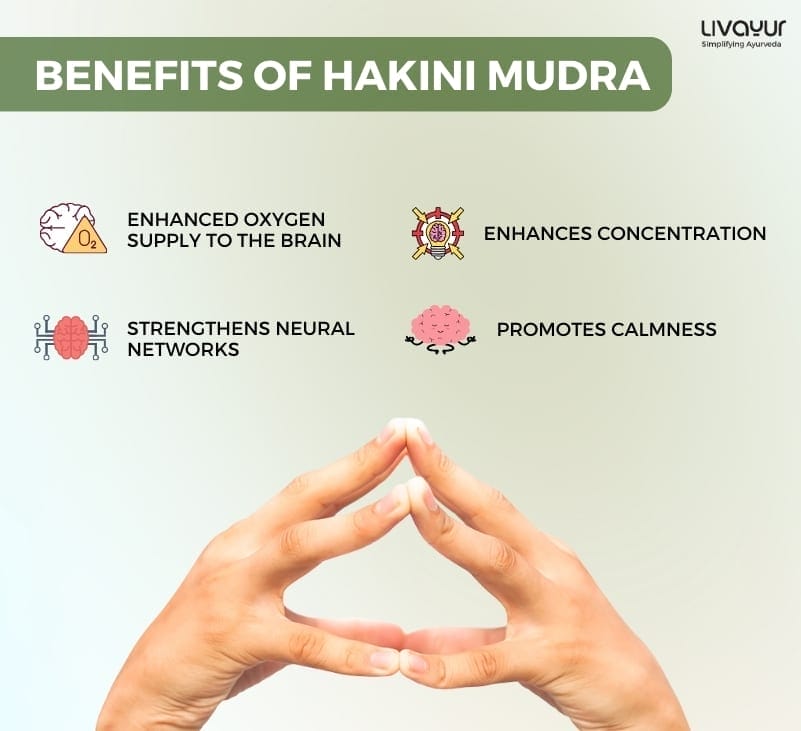Trikonasana, also known as Triangle Pose, is a fundamental asana that holds incredible power for your mind, body, and spirit. It’s like a secret treasure waiting to be unlocked on your yoga journey. Today, we will take a deep dive into this amazing yoga pose, uncovering its meaning, discovering its numerous benefits, and learning how to master it step by step.
What is Trikonasana yoga?
Trikonasana gets its name from the Sanskrit words “tri,” meaning three, and “kona,” meaning angle. As its name suggests, this pose forms a beautiful triangular shape with your body. It is a powerhouse pose that offers varied benefits for your physical and mental well-being. [1]
In Trikonasana, you create a sense of expansion and openness throughout your entire body. It engages multiple muscle groups, including your legs, hips, spine, and shoulders. As you stretch and elongate, you’ll feel a release in your hamstrings, hips, and lower back. Beyond the physical benefits, Trikonasana also works its magic on your mind and spirit. This pose encourages focus, concentration, and inner balance. [1]
What are the health benefits of Trikonasana?
Let’s dive into the fantastic benefits of Trikonasana:
- Excellent stretch for your legs, hips, and hamstrings
As you reach down towards your shin, ankle, or the floor, you’ll feel a stretch that releases tension and tightness. It’s a great way to combat those pesky knots that can build up after a long day. [2]
- Works wonders for your core strength
As you extend your torso and engage your abdominal muscles, you’ll feel your core waking up and getting ber with each breath. [3]
- Gentle massage for your spinal column
As you elongate your torso and twist slightly, you create space between the vertebrae, promoting spinal flexibility and relieving built-up tension. Trikonasana can help alleviate back pain and improve your spinal health with regular practice. [1]
- Beyond the physical realm
This pose has a calming and grounding effect on your mind. As you focus on your breath and find balance in the pose, you cultivate a sense of mindfulness and inner peace. It helps reduce stress, anxiety, and mental fatigue. [3]
How to do Trikonasana pose?
Let’s break it down step by step, and you’ll be striking a perfect pose in no time:
- Start by standing at the top of your mat with your feet about hip-width apart. Take a moment to ground yourself and find your balance.
- Take a step back with your right foot, turning it slightly outwards at a 45-degree angle. Your left foot should be pointing forward.
- Relax your arms at your sides, inhale deeply and as you exhale, extend your arms out wide to the sides, parallel to the ground.
- Keeping your legs straight and engaged, inhale and lengthen your spine. As you exhale, slowly begin to reach towards the right side.
- Let your right hand rest on your shin, ankle, or the floor. If you’re more flexible, you can place your hand on the outside of your foot.
- As you reach the right, extend your left arm toward the sky. Allow your gaze to follow your left fingertips, creating a gentle twist in your spine.
- Breathe deeply and hold the pose for a few breaths, maintaining stability and balance.
- When you’re ready to leave the pose, inhale and press through your left heel, engaging your core muscles. Slowly rise to a standing position, bringing your arms down to your sides.
- Repeat the steps on the other side, stepping back with your left foot and reaching towards the left.
Precautions to keep in mind for Trikonasana
While Trikonasana offers numerous benefits, it’s important to approach the pose with mindfulness and take the following precautions to ensure a safe and enjoyable practice:
- Warm-up
Engage in gentle movements and stretches to prepare your muscles, especially those in the legs, hips, and spine. It will prevent strain or injury during the pose.
- Alignment is key
Keep your feet firmly grounded and maintain a steady balance. Avoid placing excessive weight on the hand resting on the shin or floor.
- Avoid overstretching
Listen to your body and respect its boundaries. If you feel any discomfort or pain, ease off and modify the pose accordingly. It’s better to increase your flexibility over time gradually.
- Spinal health
If you have any existing spinal conditions or injuries, approach Trikonasana with caution. Consult with a qualified yoga instructor or healthcare professional for guidance.
- Balance and stability
If you struggle with balance, consider using a wall or a sturdy prop for support. Gradually work on building your stability and balance over time.
FAQs
1. What is Parivrtta Trikonasana?
Parivrtta Trikonasana is a revolved version of Trikonasana. It involves a twist of the torso while maintaining the triangular shape of the pose.
2. What are the steps to perform Trikonasana?
Here are the steps to perform Trikonasana:
1.Stand with feet hip-width apart.
2.Take a step back with one foot, turning it slightly outwards.
3.Extend your arms out.
4.Reach towards the side, allowing your hand to rest on your shin, ankle, or the floor.
5.Extend your other arm upwards, gazing towards the fingertips.
6.Hold the pose and repeat on the other side.
3. What is the procedure for Trikonasana?
The procedure for Trikonasana involves standing with feet hip-width apart, stepping back with one foot, extending arms out wide, reaching towards the side, and maintaining the pose while focusing on breath and alignment.
Conclusion
Incorporating Trikonasana into your practice allows you to experience increased flexibility, strength, and balance. Your legs, hips, and hamstrings will thank you as they become more supple and resilient. Your core will strengthen, providing stability and support for your entire body. Keep in mind the precautions to ensure a safe and enjoyable experience. Listen to your body and understand its limitations to understand the wonders it brings to your mind, body, and soul.
Disclaimer: The information provided here is not intended to replace professional advice or treatment.
References:
- Varying alignment affects lower extremity joint and limb loading during yoga’s triangle (Trikonasana) pose
- Effect of Various Standing Poses of Yoga on the Musculoskeletal System Using EMG.
- The Process of Becoming a Hatha-Yoga Practitioner.























